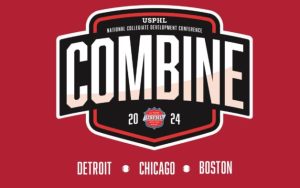NCAA’s presence in California a hot topic

Was it the first of many dominoes or a game of solitaire?
One thing is certain, Arizona State University’s announcement in November that it will elevate its club hockey program to NCAA Division I status beginning next season captured plenty of attention – and no doubt goosed the imaginations of many in the college sports world, including some in California.
No one spoken to for this article would say if a California school was interested, but would Cal, Stanford, UCLA and USC really sit on the sidelines and let a Pac-12 rival establish itself as a pioneer in a sport that is growing in popularity?
Particularly in a state where the Stanley Cup has taken up residence three times from 2007-14.
“Our organization has received more unsolicited calls and e-mails from people who want to see it at their schools (over the last couple months) than in the previous two years, but it’s a long way from happening,” said Mike Snee, executive director of College Hockey Inc., which helps promote the NCAA experience.
ASU, the nation’s largest public university with 77,000 strong in enrollment, will become the NCAA’s 60th Division I hockey program, just three years after Penn State University birthed its program.
Prior to that, only three schools (Niagara University in 1996, the University of Nebraska-Omaha in 1997 and Robert Morris University in 2004) elevated their programs from club teams.
The nine other schools to elevate to Division I in the past 20 years had Division II or III programs in place.
“A lot of people asked how come it doesn’t happen more often? The ingredients were right at ASU,” Snee said. “Now it’s looking more like a trend.”
But will the trend take hold in California? Fifteen schools in the state play club hockey at American Collegiate Hockey Association’s Division II or III (ASU is D-I).
Ken Martel grew up in California, played Division I at Lake Superior State and helped construct USA Hockey’s highly influential American Development Model. He thinks D-I hockey could become a reality.
“Last spring, there were 24 Californians on the 16 teams in the 2014 NCAA tournament. There’s enough players already playing D-I (more than 60 this season) to have at least a couple of teams in California,” Martel said. “When you look at college hockey, the schools that are successful draw from their area – Minnesota, Michigan, Wisconsin, the Boston schools.”
The state’s deepening talent pool would give any school a good starting point for recruiting.
“Outside of the Upper Midwest and the Northeast, California has the largest hockey population in the nation,” Martel said. “People now expect there are good players there. It’s not a one-off. There are more kids playing, somebody is going to emerge.”
Guy Gadowski has lived the process since becoming Penn State’s coach after successful stints at Princeton University and the University of Alaska-Fairbanks. He said recruiting is always a challenge, but the scope of support available at a school as big as Penn State was crucial.
“The biggest thing for us was our staff was a huge help with compliance and academics,” said Gadowski, also a former Fresno Falcons player and coach in the 1990s. “I’d love to see a Pacific college hockey conference. Look at the Stanley Cups out there and the number of kids playing up and down the West Coast; I wouldn’t be shocked if schools there add it.”
The benefits would be many, added Jr. Ducks director of player personnel Alex Kim, who played collegiately at the University of Miami-Ohio and Colorado College.
“A college hockey team would create another niche market for fan revenue,” he said. “It also would change the landscape of youth hockey and junior hockey. It’d impact how a youth hockey player looks at a particular school.”
Snee can see the day coming when Division I hockey comes to California; he just reiterates it’s a ways off.
“What if USC had a D-I team and won? What kind of impact would that have?” he said. “You have 38 million people in the state. If we can (add a team or teams in California) over the next 8-15 years, there’s a lot of opportunity for the game to grow.”
*** Going Division I ***
In the past 20 years, 13 teams have made the move to Division I men’s hockey. ASU will become the 14th next season.
School (former level), year
Arizona State University (ACHA), 2015
Penn State University (ACHA), 2012
Rochester Institute of Technology (Division III), 2005
Robert Morris University (ACHA), 2004
Mercyhurst University (Division II), 2000
Bemidji State University (Division II), 1999
Bentley University (Division II), 1999
Quinnipiac University (Division II), 1999
University of Alabama-Huntsville (Div. II), 1998
Canisius College (Division II), 1998
University of Connecticut (Division III), 1998
University of Nebraska Omaha (ACHA), 1997
Niagara University (ACHA), 1996
Minnesota State-Mankato (Division II), 1996
– Chris Bayee









